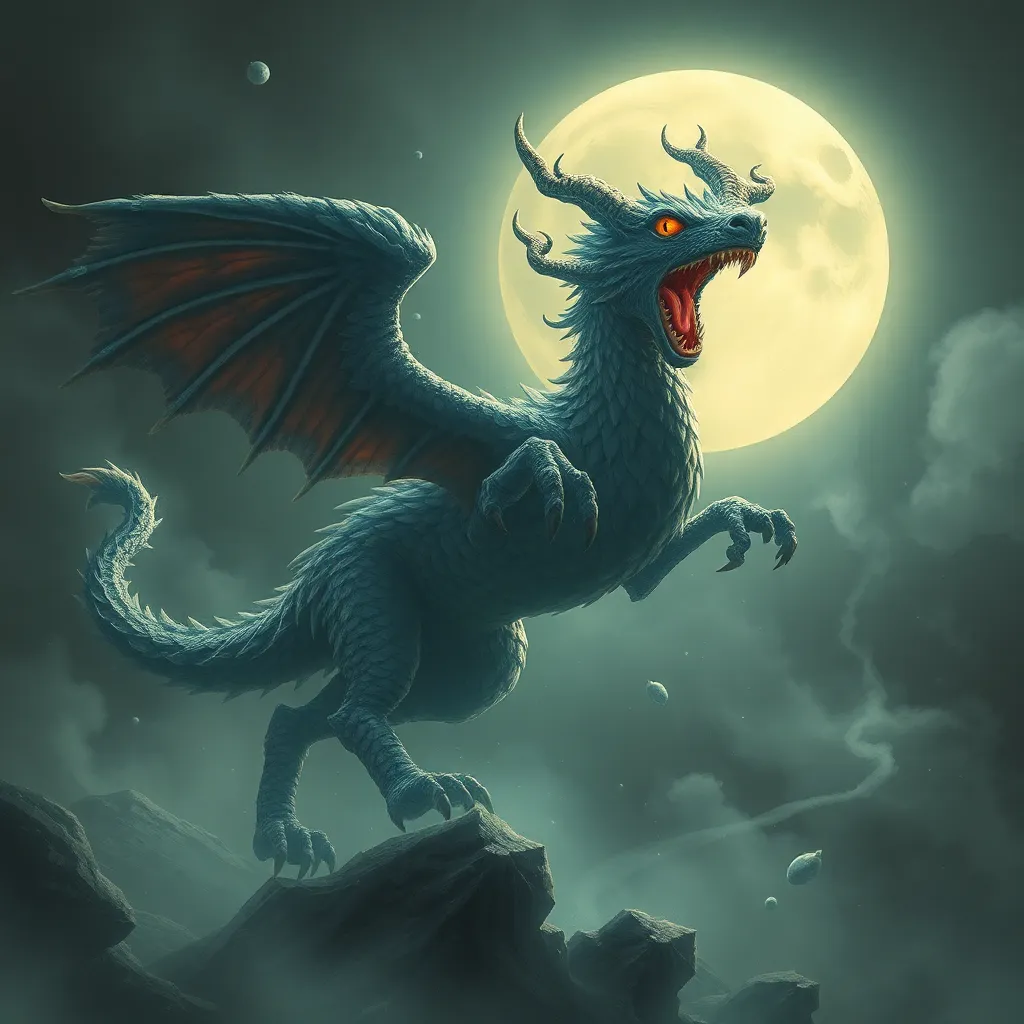The Peryton’s Haunt: Exploring Myths of the Peryton in Asia
I. Introduction to the Peryton
The Peryton is a mythical creature often described as a hybrid of a bird and a deer, possessing the wings of a bird and the body of a stag. Its unique appearance has intrigued and inspired various cultures throughout history. The Peryton is not only a fascinating subject of folklore but also a symbol of the blending of different elements of nature, signifying the interconnectedness of life.
The origins of the Peryton myth can be traced back to a variety of cultures, each contributing to its rich tapestry of stories. While it is most commonly associated with European mythology, its echoes can be found in Asian folklore as well, where it embodies various cultural meanings and interpretations.
II. Historical Context: The Peryton in Ancient Texts
References to the Peryton can be found in ancient texts, although they are often sparse and somewhat ambiguous. In some accounts, the Peryton is depicted as a creature that haunts the skies, often connected to omens or foretelling events. Classical writers mentioned it in passing, suggesting that it was a creature of intrigue and mystery.
Culturally, the Peryton has been interpreted in various ways over the centuries. In some traditions, it symbolizes the convergence of the terrestrial and celestial realms, while in others, it serves as a warning or a harbinger of misfortune. The duality in its representation reflects the complex relationship humans have with nature and the supernatural.
III. The Peryton in Asian Folklore
In Asian folklore, variations of the Peryton myth exist, often taking on different characteristics and meanings. For example, in certain East Asian cultures, the Peryton is likened to other mythical creatures, such as the Qilin or the Phoenix, which also embody the dual nature of life and death, and the cyclical patterns of nature.
- China: In Chinese mythology, the Peryton may resemble the Qilin, a creature symbolizing prosperity and serenity.
- Japan: The Peryton’s essence can be paralleled with the Tengu, a bird-like creature known for its supernatural abilities and protective nature.
- India: Similarities can be drawn with the Garuda, a powerful bird deity that is often depicted as a protector and a symbol of strength.
The symbolism attributed to the Peryton in these cultures often revolves around themes of protection, transformation, and balance. These narratives highlight the creature’s role as a guardian of nature, embodying the harmony between land and sky.
IV. The Peryton’s Habitat: Mythical Landscapes
The mythical environments associated with the Peryton are as varied as the creature itself. These habitats are often described as lush, enchanted forests or misty mountains, where the boundaries between reality and myth blur. Such landscapes are integral to the Peryton’s narrative, providing a sense of wonder and magic.
Geographical features play a crucial role in shaping the stories surrounding the Peryton. For instance:
- Forests: Dense, dark woods are commonly depicted as the Peryton’s domain, filled with secrets and mysteries.
- Mountains: High, inaccessible peaks serve as a backdrop for the creature’s legendary flights, symbolizing aspiration and transcendence.
- Rivers: Flowing waters are often seen as pathways for the Peryton, connecting different realms and cultures.
V. The Peryton and Its Connection to Other Mythical Creatures
A comparative analysis reveals that the Peryton shares similarities with various other mythical creatures in Asian mythology. These connections enhance our understanding of the Peryton’s role within the broader context of mythical fauna.
Similar creatures include:
- Qilin: A chimerical creature often depicted with deer-like features, representing good luck and prosperity.
- Tengu: A bird-like humanoid known for its martial prowess and association with the natural world.
- Garuda: A divine bird in Hindu and Buddhist mythology, symbolizing strength and protection.
These connections illustrate how the Peryton fits into a larger narrative of mythical creatures that embody the complexities of nature, spirituality, and human experience.
VI. Modern Interpretations and Representations of the Peryton
In contemporary literature, art, and media, the Peryton continues to captivate audiences. Its unique characteristics make it a compelling subject for storytelling, often symbolizing a quest for understanding and balance in a chaotic world.
Modern representations of the Peryton include:
- Literature: Fantasy novels often feature the Peryton as a mystical guide or a creature of power.
- Art: Visual arts depict the Peryton in vibrant colors and imaginative landscapes, enhancing its mythical allure.
- Media: Films and video games incorporate the Peryton into their narratives, showcasing its dual nature and magical abilities.
This resurgence of interest in mythical creatures, including the Peryton, reflects a broader cultural fascination with folklore and the natural world, encouraging exploration and appreciation of these narratives.
VII. Cultural Impact of the Peryton Myth
The Peryton myth has a significant impact on modern Asian identity and storytelling. It serves as a reminder of the rich heritage and traditions that shape cultural narratives. Storytellers, artists, and creators draw inspiration from the Peryton, weaving its essence into their works, thus keeping the myth alive.
The role of the Peryton in promoting cultural heritage and tourism is also notable. As tourists seek authentic experiences, myths like that of the Peryton offer a glimpse into the cultural fabric of Asia, attracting interest in local folklore and traditions.
VIII. Conclusion: The Enduring Legacy of the Peryton
In summary, the Peryton holds a significant place in Asian mythology, symbolizing the interplay of nature, spirituality, and the human experience. Its enduring legacy is a testament to the power of myth in shaping cultural identities and narratives.
As we reflect on the importance of preserving and exploring mythological narratives, the Peryton serves as a reminder of the beauty and complexity of our world’s folklore, urging us to continue discovering and sharing these timeless stories.



